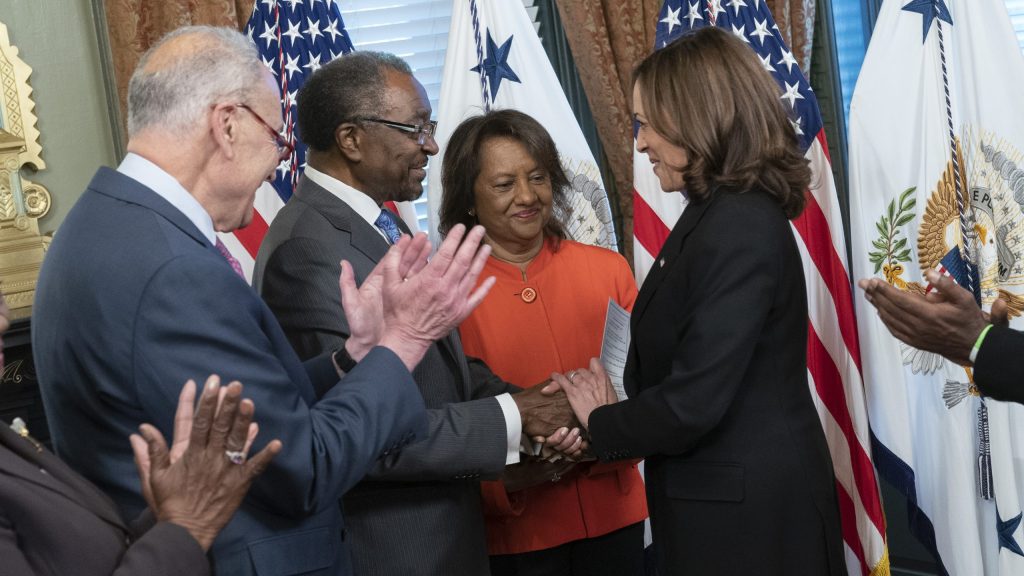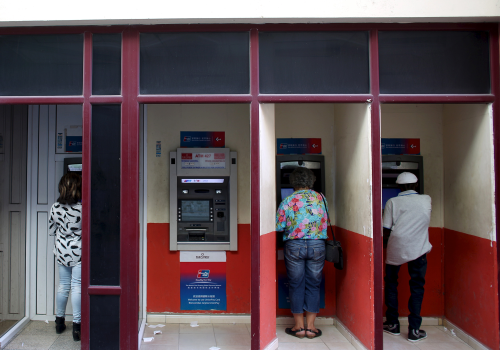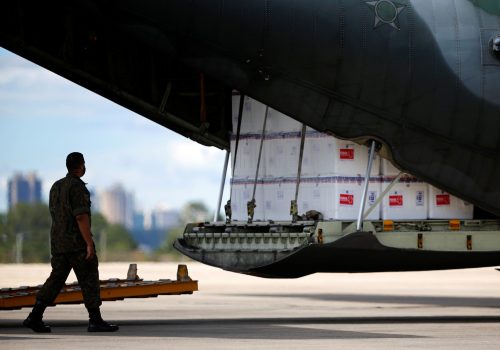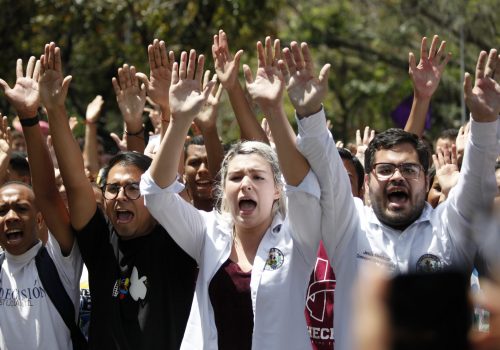Kicking off Wednesday, the Ninth Summit of the Americas could not come at a more critical time. The region is facing an array of complex challenges: Another hurricane season has begun, the effects of the COVID-19 are lingering, and global fuel and food prices are on the rise. These headwinds come as many countries’ fiscal space remains severely constrained.
Every country in the Americas is affected in some way—but none more so than the fourteen-member Caribbean Community (CARICOM). These countries have small markets and populations; import food, fuel, and medical services; and are mainly tourism- or commodity-dependent economies. The result is that as regional and global crises worsen, this group of small democratic states is at greater risk of economic decline, domestic instability, and even democratic backsliding without greater support from its partners—beginning with the United States, which will host the event for the first time since 1994.
Why does a group of small Caribbean states matter to the United States and its interests? For one, most CARICOM countries are stable democracies, an increasingly rare commodity in a hemisphere where authoritarian tendencies are growing. Located close to US shores, but also situated in other parts of the hemisphere (Guyana and Suriname in South America and Belize in Central America), any spillover from instability from farther-flung places could directly impact the United States.
CARICOM countries are also crucial to the US economy and hold key votes in multilateral forums that advance US regional and international interests. In the Organization of American States, for example, CARICOM holds 40 percent of the hemisphere’s votes. The region is seen as a vote multiplier in international organizations when the Community aligns with other regional bodies, such as the African Union. These countries also contribute to a third of Florida’s overall trade with the hemisphere, while small-business owners in the region predominantly purchase goods and services from US companies with a presence in Miami.
Given the important role the Caribbean plays for US interests at the national, regional, and international levels, next week’s summit in Los Angeles is an opportunity to seek solutions to common challenges and implement the regional cooperation required to address them. The leader conversations—during which CARICOM heads of state and government will have an opportunity to engage with US leaders over a couple days—should refocus US policy toward the Caribbean (alongside that of the rest of the hemisphere), with the United States listening to the shared challenges of the CARICOM heads of government and meeting them with action.
Tangible announcements at the summit will be important—but what happens in the days and months after counts more. With growing geopolitical competition in the region, this will be the rare opportunity for the United States to reassert its long-term interest in a strong partnership with the Caribbean based on joint priorities and tangible results.
Key steps to success
First, US-Caribbean ties need to be more frequent and consistent. Prior to the summit, US attention on the Caribbean has been unusually high, with several officials visiting the region and meeting with country representatives in Washington. But this level of engagement should not be an anomaly; it should be a blueprint. Some Caribbean ambassadors have already called for an annual US-Caribbean Summit. The United States should go further by promoting even more regular diplomatic engagement, from high-level government visits to day-to-day interactions.
The next CARICOM conference for heads of government in early July is an immediate opportunity for the White House. Another is to use public diplomacy to highlight positive US activity in the region and strengthen cooperation in the areas of health and education. These interactions can help implement US policy by having people on the ground assess progress of current projects and reinforce the long-term cultural affinities shared among US and Caribbean citizens.
Second, with a new climate and energy partnership with Caribbean countries to be announced, the United States should help build and strengthen the region’s institutional capacity. The small populations and markets of the Caribbean often mean there is a ceiling to how much assistance they can receive from international financial institutions and allies, including the United States. Regional partnerships are effective, but an additional focus should be on developing domestic institutions, which in turn would help US companies and international financial institutions allocate greater financing for projects in the region (and lessen reliance on support from external actors such as China).
The region can even become a model for future energy security, since many Caribbean countries are exploring renewables to accelerate their energy transitions while also developing hydrocarbon sectors. Working with the Caribbean to balance revenues from fossil fuels and invest in renewables and other cost-efficient energy models can diversify the US government’s own approach to energy policy abroad to be inclusive of all countries’ energy circumstances.
Third, the United States will need to expand the scope of the economic tools it has used to stimulate development in the Caribbean. Near-shoring is a growing priority, as is boosting the US private sector abroad. But both face significant barriers due to financial de-risking by US correspondent banks, as well as the limits on the US Development Finance Corporation (DFC) working with middle- and high-income economies. De-risking, or the termination of banking relations from Caribbean financial institutions due to concerns about money laundering or low profit margins, limits access to cross-border transactions. As a result, Caribbean consumers cannot pay for goods from the United States while US companies will be unable to pay employees in the region if companies leave China and move into the Western Hemisphere.
Because it is home to many English speakers, is in a similar time zone to the US east coast, and is looking to create more jobs outside the tourism industry, the Caribbean holds significant near-shoring potential. Curbing de-risking widens the potential areas for smaller and medium-sized US companies to move operations into the Caribbean instead of competing with bigger ones in Latin America.
And although most Caribbean countries are classified as high- or middle-income economies, this is not an accurate representation of the challenges they face. Their small markets and debt-ridden economies leave them disproportionately vulnerable to external economic shocks and render them unprofitable for bigger multinational companies. Expanding the DFC’s scope to allow the institution to work further with the Caribbean can help increase US investment in the region and help finance key infrastructure projects to achieve energy security, widen digital access, or improve resilience for critical structures such as schools, hospitals, and government buildings.
The lead-up to the Summit of the Americas has focused on the parlor game of who will sit at the table. But the event should not be remembered for its guest list. Instead, it is a real opportunity for the United States to build goodwill and momentum to produce big wins for Caribbean citizens and, more broadly, for US-Caribbean relations in tandem with the rest of the hemisphere. With the world’s challenges growing in intensity, frequency, and complexity, the United States will need a strong next-door neighbor in the Caribbean, while Latin America needs a stronger partnership with Caribbean countries. The road to this next phase needs to start in Los Angeles.
Jason Marczak is senior director of the Atlantic Council’s Adrienne Arsht Latin America Center.
Wazim Mowla is the assistant director for the Caribbean Initiative at the Adrienne Arsht Latin America Center.
Further reading
Tue, Mar 1, 2022
Financial de-risking in the Caribbean: The US implications and what needs to be done
Report By Jason Marczak, Wazim Mowla
This report identifies how the withdrawal of correspondent banking relations, otherwise known as de-risking, affects Caribbean economies, people, and US-Caribbean relations.
Wed, Feb 23, 2022
US-China vaccine diplomacy: Lessons from Latin America and the Caribbean
Report By
The implications of diverging COVID-19 responses, notably at the onset of the pandemic’s rise in the region, will reverberate beyond the health sector. What might the differing US and China pandemic approaches portend for future influence in the region?
Tue, Jan 4, 2022
Venezuela’s youth have a long-term strategy for building democracy. Biden should listen.
New Atlanticist By
An entire generation of Venezuelans have grown up in a failed state, which is why they'll be crucial to the future of the country’s democracy.
Image: US Vice President Kamala Harris congratulates N. Nickolas Perry after he was sworn in as US ambassador to Jamaica in Washington, DC, on May 9, 2022. Photo by Chris Kleponis/Pool/Sipa USA/REUTERS



